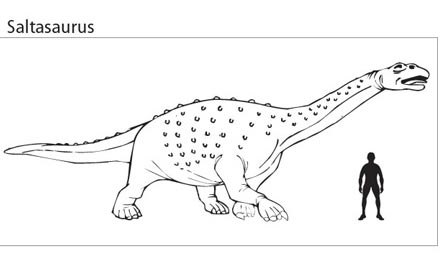Smuggled Fossils Returned Home to Buenos Aires
Smuggled fossils returned to Argentina. In a cultural repatriation ceremony held last week nearly 4 tonnes of fossils were returned to Argentina by US Customs and Immigration Enforcement officials who had seized the items in raids back in 2006.
The fossils, believed to date from the Mesozoic era, otherwise known as the Age of Reptiles, include an unspecified number of dinosaur eggs, plus shell fragments, fossilised pine cones and rare fossil prehistoric arthropods. They were seized during a raid on a fossil dealer at the 2006 Tucson Gem and Mineral show. The US Customs and Immigration officials were following a lead provided by Interpol, a reflection on the sad fact that the smuggling of rare artefacts such as fossils is an international business, one that is growing all the time.
The American officials raided a vendor at the show and subsequently impounded a number of other specimens at a nearby warehouse, suspecting that these objects had been illegally imported into the USA.
Posing as buyers, United States Customs officials conducted surveillance, taking photos of suspicious specimens and making detailed notes about the artefacts for sale. Using the evidence that the team had gathered a federal warrant was issued and the consignment of fossils impounded.
Lisa Fairchild, the special agent supervising the case, said at the time that the agency considered the fossils priceless.
“It’s the property of another government and it can’t be replaced,” she commented.
USA Customs issued a statement to coincide with the official ceremony handing the fossils back to the Argentine Government stating that the investigation is continuing. Julie Myers, Assistant Secretary for the USA Customs department stated:
“We think these historical artefacts rightly belong to the people of Argentina, so I’m very proud to be able to formally hand them back”.
Unfortunately, the smuggling of fossils and other rare items out of countries like Argentina, China and Thailand is a common occurrence. State authorities are attempting to clamp down on such activities, however the relative lack of specialist knowledge hampers many such investigations. In addition, the rapid rise in auction prices for rare fossils has added greater impetus to illegal smuggling of such items.
There have been a number of cases recently concerning the smuggling of Mesozoic fossils, including a number of incidents involving the smuggling of rare titanosaur eggs. A number of consignments have been seized by Government authorities, many contained complete or nearly complete eggs believed to have come from a titanosaur nesting site in Argentina. It is not entirely clear which genus of dinosaur may have laid the eggs but it is likely they came from a dinosaur such as Saltasaurus.
Fossils of Saltasaurus have been found in Argentina and Uruguay, an extensive nesting site associated with this animal was unearthed in Patagonia (southern Argentina). Fossil trackways indicate that Saltasaurus lived in herds. The eggs were about the size of footballs, the animals had excavated shallow holes, then laid their eggs before covering them with sand and vegetation, in a similar fashion to American Alligators.
An Illustration of the Titanosaur Saltasaurus (Scale Model)
Picture credit: Everything Dinosaur
The picture above is of a scale model of the titanosaur, Saltasaurus to view the titanosaur models within the Everything Dinosaur range: Dinosaurs and Prehistoric Animal Models.
Criminal Gangs
Much of this activity is being directed by organised criminal gangs, however, fraud in the sell of fossils and other items such as gemstones and minerals is quite common. Whether this is due to a genuine mistake on behalf of the vendor or whether it is a deliberate attempt to mislead the buyer is often unclear.
A typical example of how people can be deceived occurred just the other day when one of the Everything Dinosaur team members went to the Post Office to drop off some parcels ready for despatch.
As the parcels were being processed and receipts printed off, the Post Office Manager mentioned that his partner had recently purchased a necklace that contained a gemstone made from Dinosaur poo that was over 40 million years old. The technical term for fossilised droppings is coprolites and indeed there are a number of legitimate sources of such items. The coprolite specimens are usually small fragments that have been further cut by diamond bladed saw, then shaped and polished to produce a shiny, smooth gemstone.
It can be difficult to identify the genuine article once it has gone through such a transformation and indeed, our colleague’s suspicions were further aroused when the wrong date was given by the buyer of the piece. Mistakes do happen, it is very difficult to identify coprolite to the genus of animal that produced it in the first place, especially if no provenance is provided with the item. Often if the gemstone is a coprolite it may have actually have been produced by a crocodile or turtle rather than a dinosaur. By claiming it is “dino poo”, the price can be bumped up a little.







Leave A Comment